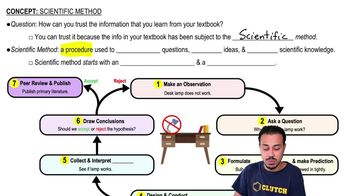Which of the following is a scientific name?
a. Mycobacterium tuberculosis
b. Tubercle bacillus
 Verified step by step guidance
Verified step by step guidance



Which of the following is a scientific name?
a. Mycobacterium tuberculosis
b. Tubercle bacillus
Which of the following statements about E. coli is false?
a. E. coli was the first disease-causing bacterium identified by Koch.
b. E. coli is part of the normal microbiome of humans.
c. E. coli is beneficial in human intestines.
d. E. coli gets nutrients from intestinal contents.
e. None of the above; all the statements are true.
Briefly state the role microorganisms play in each of the following:
a. biological control of pests
b. recycling of elements
c. normal microbiota
d. sewage treatment
e. human insulin production
f. vaccine production
g. biofilms
Which of the following is not a characteristic of bacteria?
a. are prokaryotic
b. have peptidoglycan cell walls
c. have the same shape
d. grow by binary fission
e. have the ability to move
Which of the following is the most important element of Koch’s germ theory of disease? The animal shows disease symptoms when
a. the animal has been in contact with a sick animal.
b. the animal has a lowered resistance.
c. a microorganism is observed in the animal.
d. a microorganism is inoculated into the animal.
e. microorganisms can be cultured from the animal.